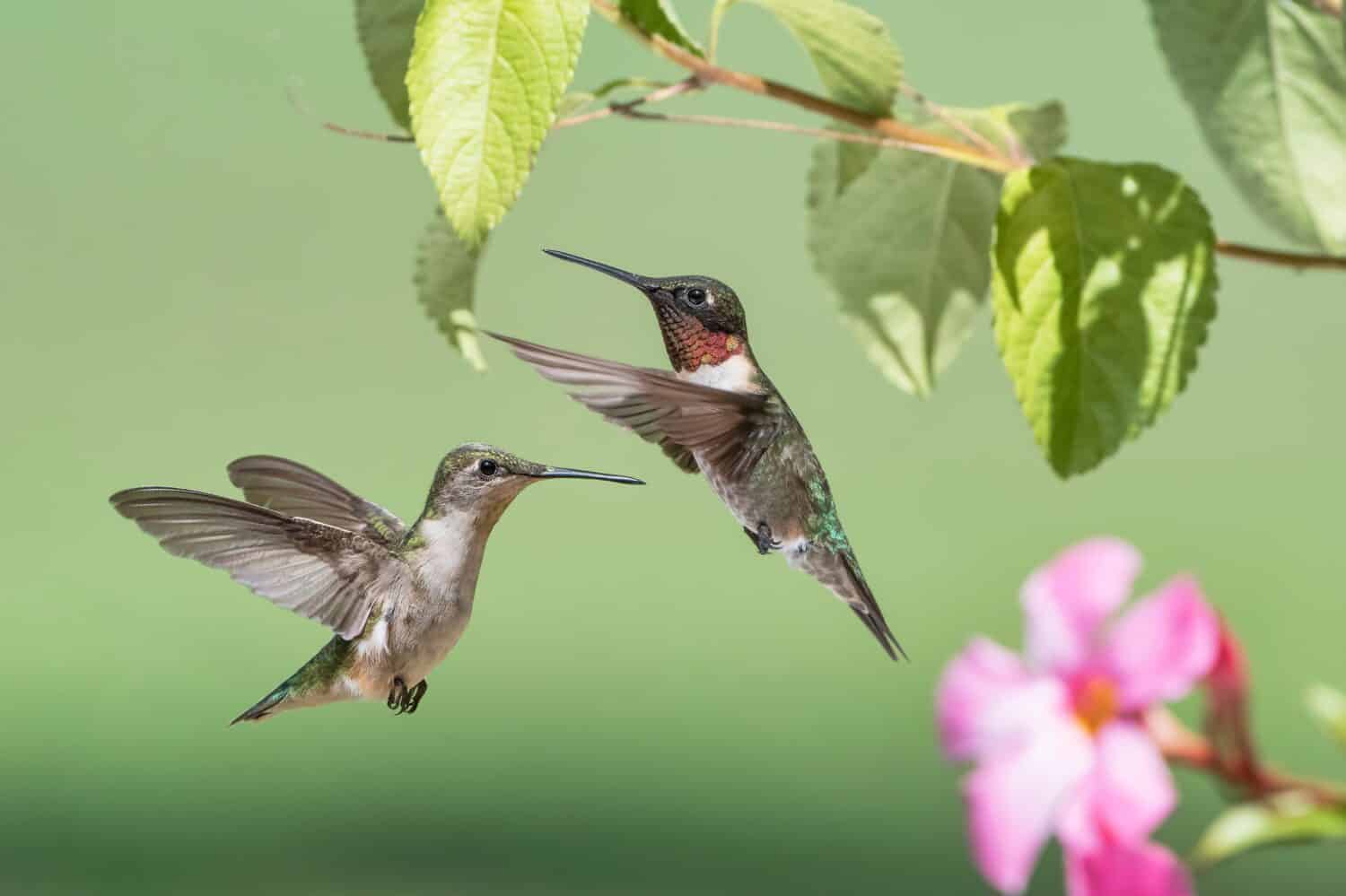Geraniums are very popular flowers and for a good reason. They come in countless shades and sizes. Plus, they have a delightful scent that adds a bit of perfumed mystery to your yard or garden. But are they going to attract any hummingbirds to your yard? Do hummingbirds like geraniums? We answer that question below. Then, if you are a fan of the tiny birds, you may want to keep reading as we explore a handful of other flowers that will attract them in droves.
Do Hummingbirds Like Geraniums?
The answer feels like it should be simple. How could hummingbirds not love the sweet, fragrant smell of geraniums (Pelargonium spp.)? However, the problem is that our small feathered friends cannot smell very well. So, that means that the scent of flowers isn’t what attracts them. Rather, hummingbirds get drawn to brightly colored blossoms. They particularly love the color red.
Thankfully, one of the colors that geraniums come in is red. So these lovely flowers will draw in the local hummingbird crowd. However, there’s a slight catch.
Geraniums aren’t as rich in nectar as other flowers. That means that while hummingbirds will show up to check out your gorgeous red blossoms, they aren’t likely to stay very long. So while hummingbirds like geraniums, they don’t appear to love them.
But don’t worry. You can plant the beloved flower in your garden or yard and keep the hummingbirds coming back for more. One way to do so is to build a larger flower garden space, incorporating other flowers that hummingbirds frequent. We will go over a few options shortly. First, let’s look at how to grow geraniums so they continue to thrive.
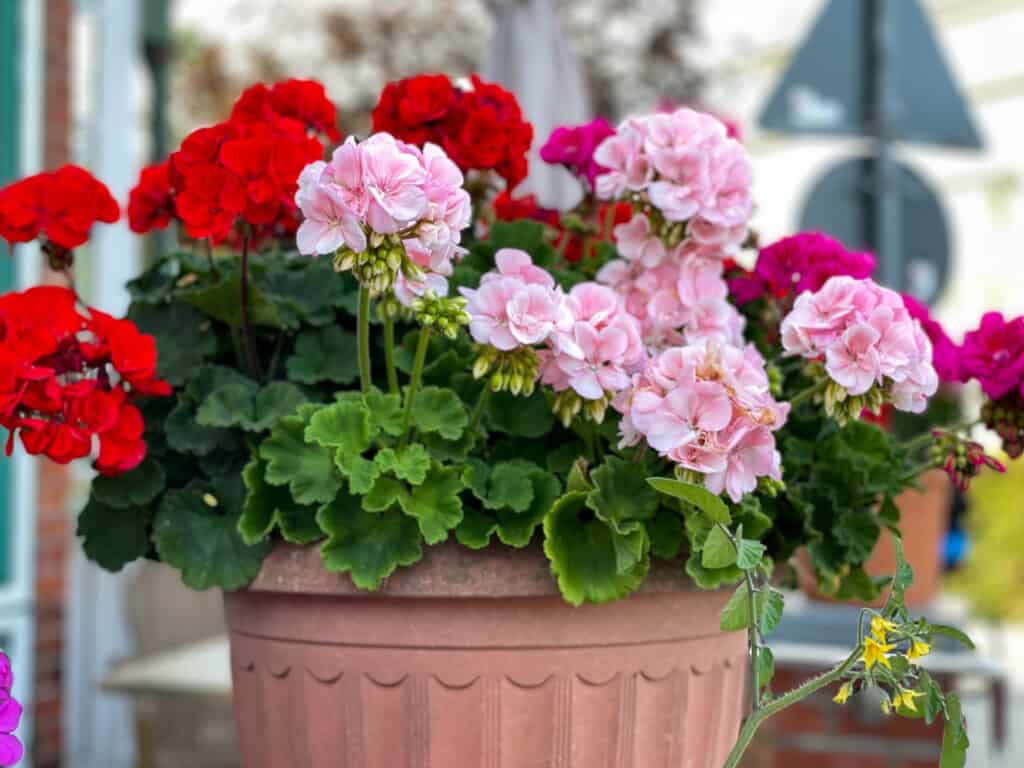
Geraniums grow very well in containers. You can plant some brightly colored varieties to attract hummingbirds.
©Lapa Smile/Shutterstock.com
Tips for Growing Geraniums
Geraniums are winter hardy in USDA Zones 10 and 11. However, they will grow happily as annuals or in protected spaces in other growing regions.
Before you plant your new geraniums, there are a couple of factors to consider. The first is that they need plenty of space to grow. That could mean properly sized containers or enough space in the garden to ensure good airflow. Plan on a spot that allows for 2 feet of growth width-wise and about 1.5 feet height-wise. They also require full sun. They won’t develop the desired blossoms if they receive too much shade.
Geraniums don’t like to get watered too frequently. So before watering, stick your finger into the soil. You will want to water when the first inch is dry. However, that only works during the peak growing season. Your flowers will need less water in the winter since it is dormant. Allow the soil to dry out completely before watering.
Provide a fresh round of fertilizer approximately every two weeks during the growing season but not in the dormant (winter) months. In the colder period, your will not need to feed your geranium more than a few times. You can resume more frequent feedings as spring nears.
Utilize the practices of pruning and deadheading to encourage bushier growth and more abundant floral displays. You can prune back stems to develop thicker, bushier plants. And once a flower head has died, remove it from the plant. It may feel counterintuitive, but this process will ensure you get more lovely flowers to enjoy.
If you live in a colder zone, you will want to take extra precautions during the winter. It is possible to successfully overwinter your geranium plants if you don’t want to start over. Depending on what your winter weather typically looks like, consider wrapping your geranium plants to protect them against frost. Alternatively, plant them in containers that you can move inside during colder weather.

Geraniums need plenty of space to grow, so make sure you have appropriately sized containers or enough space in the garden.
©Jane Nadezhina/Shutterstock.com
5 Other Flowers Hummingbirds Love
Since hummingbirds like geraniums but don’t stay for too long, you may want to plant additional hummingbird-friendly flowers. Here are a few to get you started.
1. Trumpet Honeysuckle
Add a touch of elegance to your outdoor space by planting trumpet honeysuckle (Lonicera sempervirens). This vining plant can reach up to 20 feet tall and 6 feet wide. It is a member of the Caprifoliaceae (honeysuckle) family. Trumpet honeysuckle loves full sun, moderate moisture, and neutral soil. But why should you consider dedicating so much garden space to this flower?
One good reason is because of its stunning appearance. The blossoms are large (1 to 3 inches) and trumpet-shaped. Additionally, hummingbirds love the brightly colored flowers. Their long beaks and extra-long tongues can reach down into trumpet-shaped flowers to retrieve nectar that other pollinators can’t access.
One word of caution, however. Trumpet honeysuckle is highly flammable, so avoid planting it close to your house.

Trumpet Honeysuckle is gorgeous when it is in full bloom.
©shepherdsatellite/Shutterstock.com
2. Bee balm
You may know bee balm (Monarda didyma) as monarda. And, while the flowers attract bees, as the name suggests, hummingbirds also adore them. Bee balm is a perennial that belongs to the Lamiaceae (mint) family. This plant loves full sun and moist soil. Just make sure it has adequate drainage. You will want to leave plenty of room for this flower since it can reach up to 4 feet tall.
It brings in all the pollinators, including hummingbirds. And not only does it add a rich layer of color and scent to any space, but it also offers another benefit. Bee balm flowers are edible. It also plays an important role in herbal medicine.
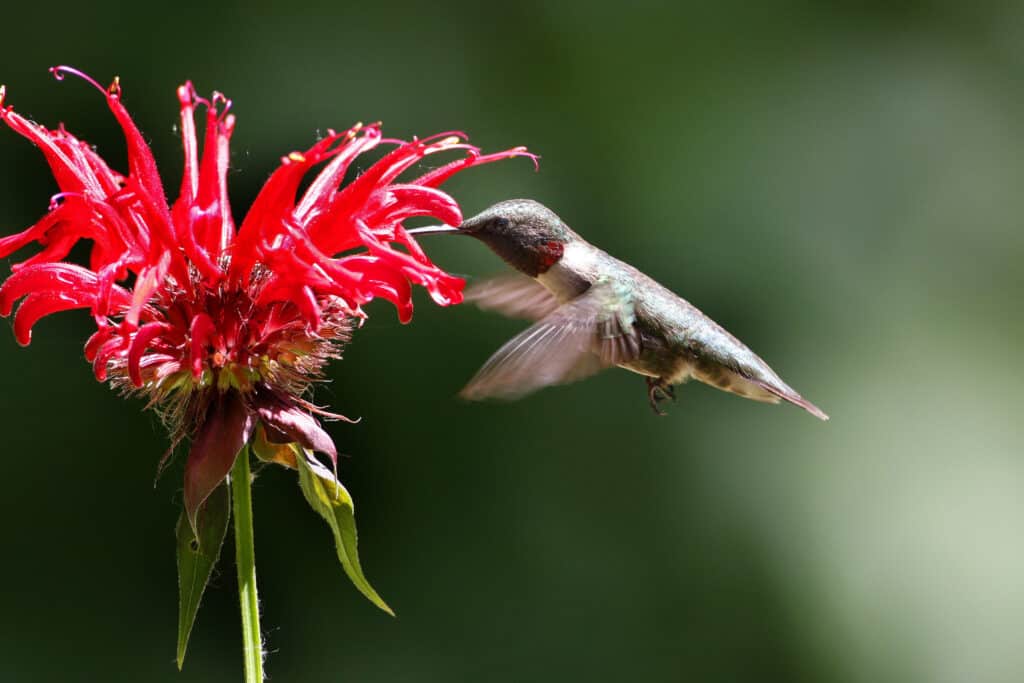
Hummingbirds love visiting scarlet bee balm for its sweet nectar.
©Chris Alcock/Shutterstock.com
3. Petunias
Consider adding petunias (Petunia spp.) to your flower collection if you have some extra space or a spot for a container or two. With hundreds of varieties and cultivars to choose from, the possibilities are nearly endless. And they don’t need much. Their primary need is adequate sunlight, preferably full sun, but at least six hours. They aren’t demanding with their watering needs and don’t even require a specific type of soil.
These flowers are ideal for hedges, borders, and containers. Plus, their incredibly rich and deep colors attract plenty of hummingbirds. Do keep in mind that there are lighter shades (and white) available. So, if you want to bring in fast, feathered friends, opt for something brighter.
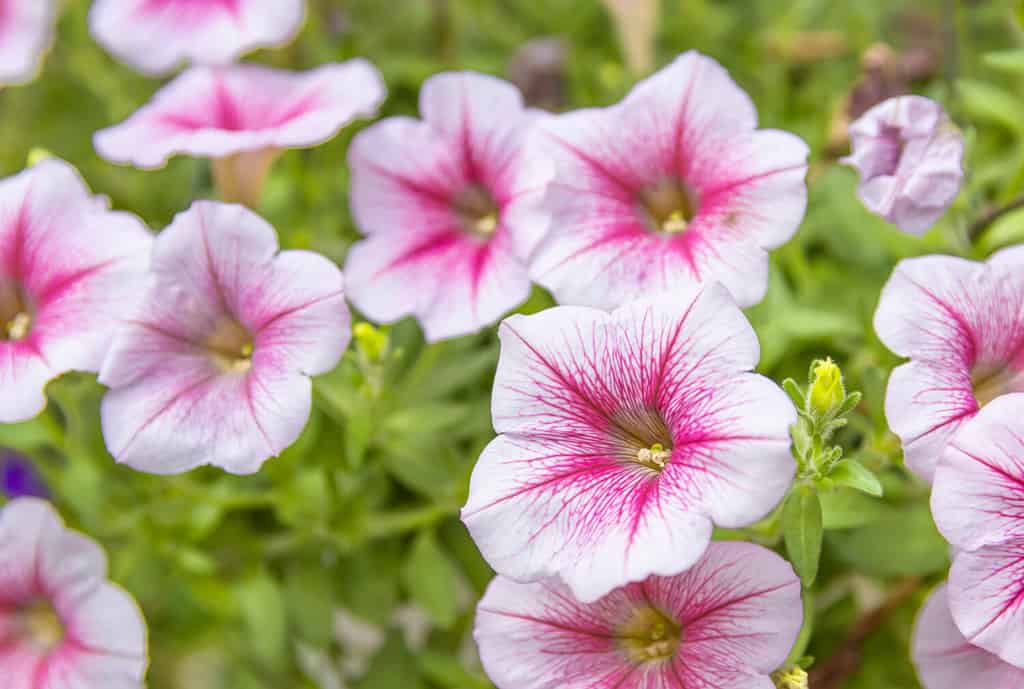
Petunias’ incredibly rich and deep colors can successfully attract hummingbirds.
©aomnet7/Shutterstock.com
4. Zinnias
Almost everyone has heard of zinnias (Zinnia spp.). These gorgeous flowers are extremely popular among gardeners due to their dense foliage and stunning blossoms. They are an annual that belongs to the Asteraceae (daisy) family. And the best part is that they are beginner-friendly plants.
Provide your zinnias with a spot with full sun and moderate-quality soil. Keep them deadheaded to encourage growth. They are rabbit and deer resistant, and even some disease-resistant varieties. You can find zinnias in nearly every color; they work well planted almost anywhere, including containers. Once you add zinnias to your garden, you will start to see hummingbirds and other pollinators frequenting the area.
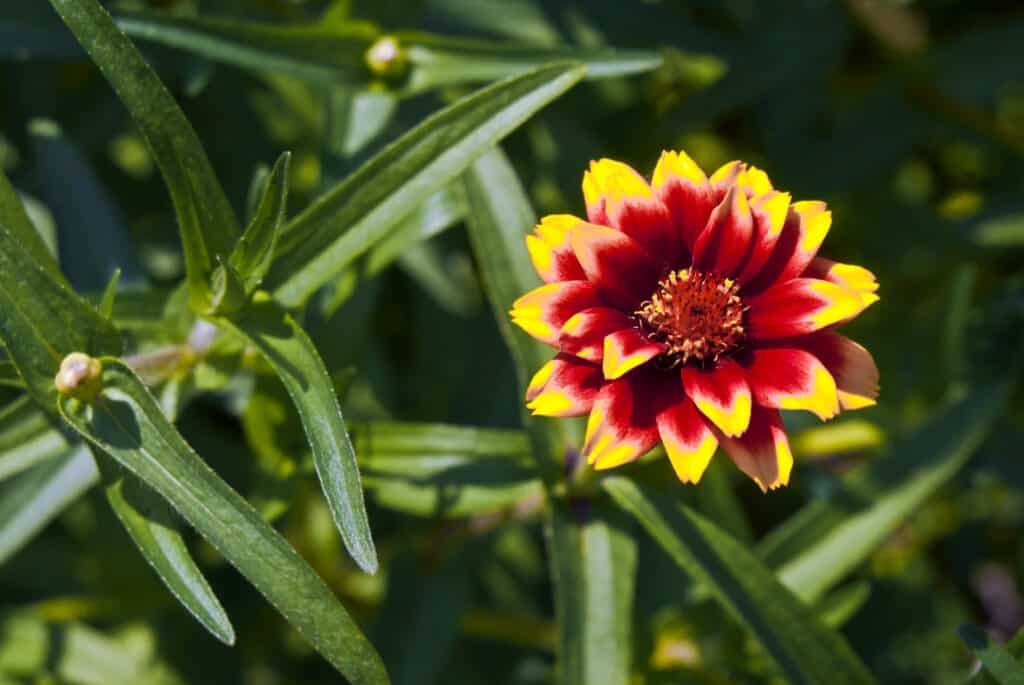
Zinnias come in a seemingly never-ending range of colors and shapes.
©Nick Pecker/Shutterstock.com
5. Red Columbine
These stunning flowers are a favorite of hummingbirds. Red Columbines (Aquilegia canadensis) are in the Ranunculaceae (buttercup) family. This perennial can reach up to 3 feet tall and roughly 1.5 feet wide. They prefer shaded areas and rich organic soil. Essentially, do the best you can to mimic the environment it came from – forested areas.
If you plant red Columbines, you will make the hummingbird population doubly happy. Not only do they showcase the bright color these tiny birds are so fond of, but the tubular-shaped flowers also ensure plenty of nectar is left for them.
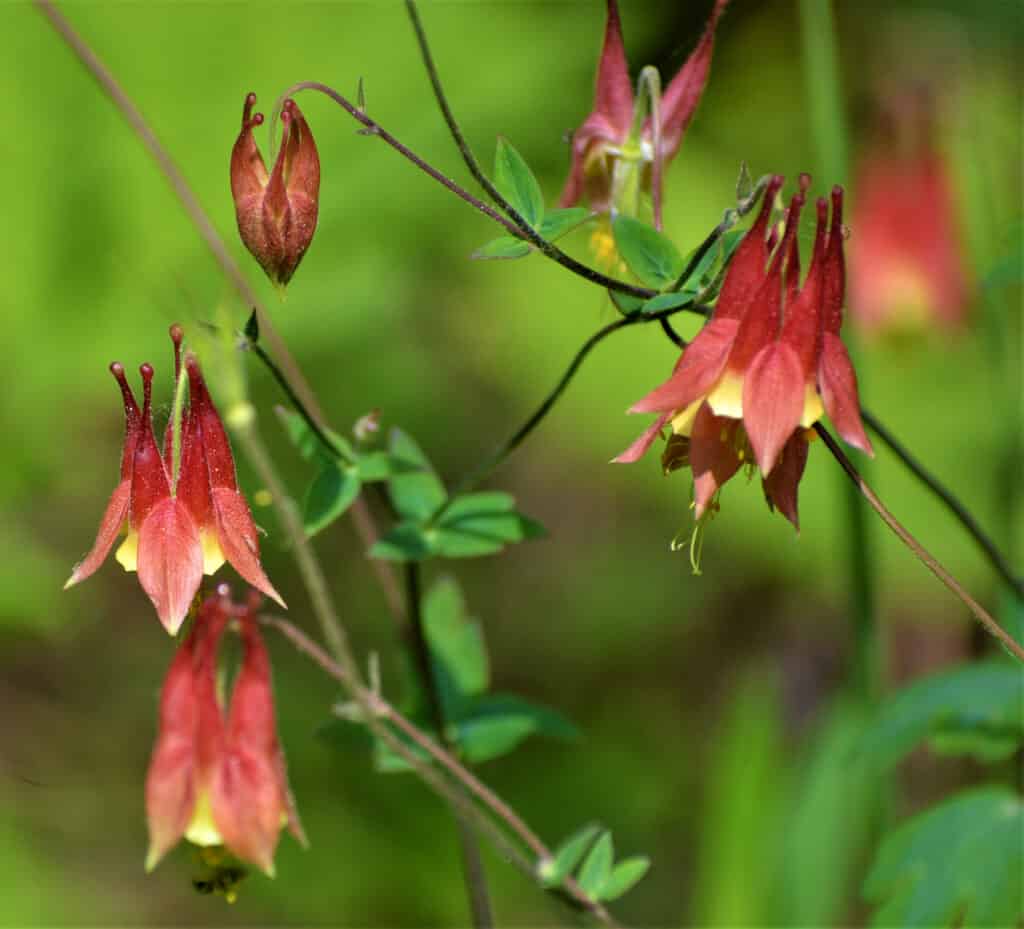
Hummingbirds love the bright red, tubular-shaped red columbine flowers. Plenty of nectar exists for them since other pollinators can’t reach it.
©akslocum/Shutterstock.com
Thank you for reading! Have some feedback for us? Contact the AZ Animals editorial team.

